-
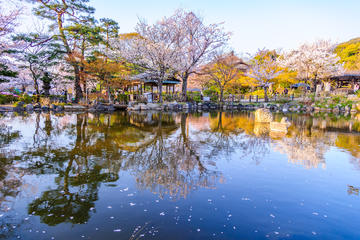 Maruyama Park
Maruyama Park Set at the base of Maruyama Mountain in the western suburbs of Sapporo, Maruyama Park comprises 15 acres (6 hectares) of virgin and secondary forest filled with oak, magnolia, maple and Japanese katsura trees. Some 1,700 Hokkaido wild cherry trees also grow within the park, making it
Maruyama Park
Maruyama Park Set at the base of Maruyama Mountain in the western suburbs of Sapporo, Maruyama Park comprises 15 acres (6 hectares) of virgin and secondary forest filled with oak, magnolia, maple and Japanese katsura trees. Some 1,700 Hokkaido wild cherry trees also grow within the park, making it
-
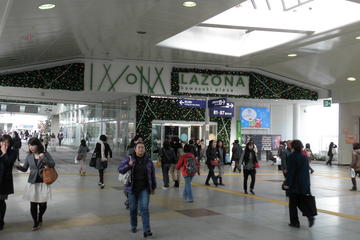 Lazona Kawasaki Plaza
Lazona Kawasaki Plaza Nicknamed “the land of anything you could want,” Lazona Kawasaki Plaza is one of the biggest shopping centers in Kanto, with some 300 retailers under one roof. Popular international brands like Gap, Zara, Tommy Hilfiger and UNIQLO are intermixed with Japanese brands.Shoppers
Lazona Kawasaki Plaza
Lazona Kawasaki Plaza Nicknamed “the land of anything you could want,” Lazona Kawasaki Plaza is one of the biggest shopping centers in Kanto, with some 300 retailers under one roof. Popular international brands like Gap, Zara, Tommy Hilfiger and UNIQLO are intermixed with Japanese brands.Shoppers
-
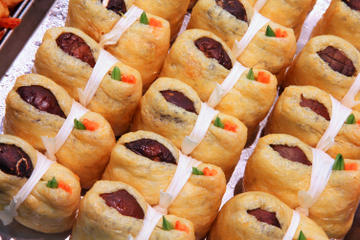 Kuromon Ichiba Market
Kuromon Ichiba Market Nicknamed “Osaka’s kitchen,” the Kuromon Ichiba Market caters to the city’s chefs. Every day, cooks from well-known -- and hole-in-the-wall -- restaurants scurry through the 600 meter-long market’s 170 food stalls purchasing fresh fruits, vegetables, fish, eggs, herbs, and mo
Kuromon Ichiba Market
Kuromon Ichiba Market Nicknamed “Osaka’s kitchen,” the Kuromon Ichiba Market caters to the city’s chefs. Every day, cooks from well-known -- and hole-in-the-wall -- restaurants scurry through the 600 meter-long market’s 170 food stalls purchasing fresh fruits, vegetables, fish, eggs, herbs, and mo
-
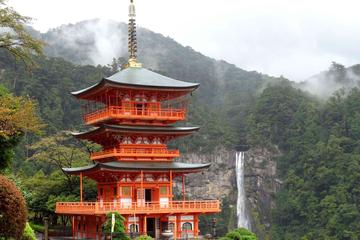 Kumano Kodo
Kumano Kodo The ancient pilgrimage to the Three Grand Shrines of Kumano spans as far back as 1,000 years ago and still continues today. The pilgrimage routes that crisscross Kii, Japan’s largest peninsula have become known as the Kumano Kodo. Pilgrims and tourists, alike, take on the route to reac
Kumano Kodo
Kumano Kodo The ancient pilgrimage to the Three Grand Shrines of Kumano spans as far back as 1,000 years ago and still continues today. The pilgrimage routes that crisscross Kii, Japan’s largest peninsula have become known as the Kumano Kodo. Pilgrims and tourists, alike, take on the route to reac
-
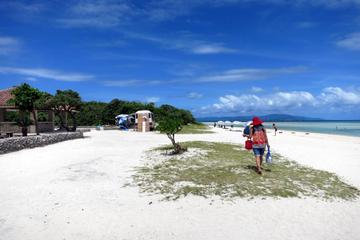 Kondoi Beach
Kondoi Beach Stationed on the west coast of Taketomi Island, Kondoi Beach offers travelers unlimited access to vast turquoise waters and perfect white sandy shores. Kondoi is home to some of the best snorkeling in the area, too—but visitors say it all comes at a price. Travelers looking to unwind
Kondoi Beach
Kondoi Beach Stationed on the west coast of Taketomi Island, Kondoi Beach offers travelers unlimited access to vast turquoise waters and perfect white sandy shores. Kondoi is home to some of the best snorkeling in the area, too—but visitors say it all comes at a price. Travelers looking to unwind
-
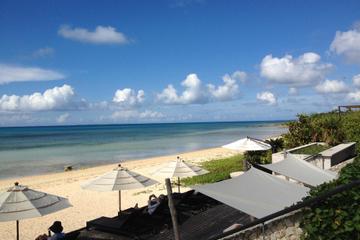 Kohama Island
Kohama Island Rolling hills and uninterrupted views set the island of Kohama apart from others in the Yaeyama archipelago. Travelers can wander grassy passes and shaded trails to two of the island’s most popular lookouts—Chura san’s Point and Ufudake. Locals say Chura san offers some of the best v
Kohama Island
Kohama Island Rolling hills and uninterrupted views set the island of Kohama apart from others in the Yaeyama archipelago. Travelers can wander grassy passes and shaded trails to two of the island’s most popular lookouts—Chura san’s Point and Ufudake. Locals say Chura san offers some of the best v
-
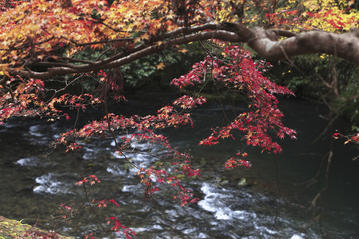 Kiyotaki River
Kiyotaki River The crystal-clear waters of the Kiyotaki River make its banks one of the most scenic walking trails in the Kyoto area. Alighting from the bus at the Takao stop that heads west out of Kyoto and then on to Ninnaji Temple, it’s just a short walk down to the banks of the Kiyotaki River.
Kiyotaki River
Kiyotaki River The crystal-clear waters of the Kiyotaki River make its banks one of the most scenic walking trails in the Kyoto area. Alighting from the bus at the Takao stop that heads west out of Kyoto and then on to Ninnaji Temple, it’s just a short walk down to the banks of the Kiyotaki River.
-
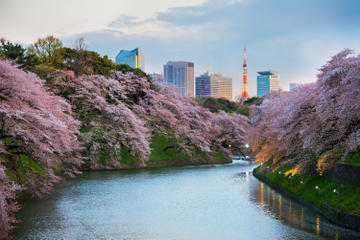 Kitanomaru Park
Kitanomaru Park Located just north of the Imperial Palace grounds in Tokyo, Kitanomaru Park was once the site of the northernmost section of Edo Castle, where members of the Tokugawa clan lived. In 1969 in celebration of Emperor Showa’s 60th birthday, the area was opened to the public as a woodlan
Kitanomaru Park
Kitanomaru Park Located just north of the Imperial Palace grounds in Tokyo, Kitanomaru Park was once the site of the northernmost section of Edo Castle, where members of the Tokugawa clan lived. In 1969 in celebration of Emperor Showa’s 60th birthday, the area was opened to the public as a woodlan
-
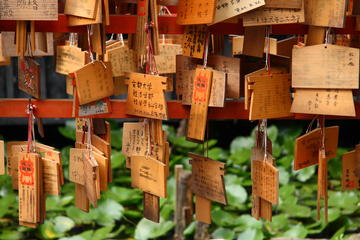 Kennin-Ji Temple
Kennin-Ji Temple The oldest and one of the most important Zen temples in Kyoto, Kennin-Ji was founded in the year 1202 by a monk. Situated near the famous Geisha district of Gion, Kennin-ji attracts Buddhist monks on pilgrimage, as well as religious locals and tourists, and curious explorers.
Kennin-Ji Temple
Kennin-Ji Temple The oldest and one of the most important Zen temples in Kyoto, Kennin-Ji was founded in the year 1202 by a monk. Situated near the famous Geisha district of Gion, Kennin-ji attracts Buddhist monks on pilgrimage, as well as religious locals and tourists, and curious explorers.
-
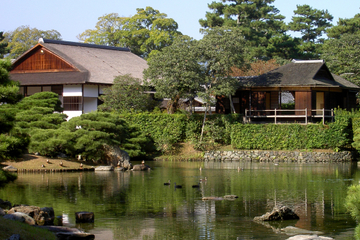 Katsura Imperial Villa
Katsura Imperial Villa One of Japans most important large-scale cultural treasures, Katsura Imperial Villa preserves traditional Edo period architecture and garden design. Tatami, or rice straw mats, line the interior floors, and screen walls separate the ancient drawing room from tea houses. A ci
Katsura Imperial Villa
Katsura Imperial Villa One of Japans most important large-scale cultural treasures, Katsura Imperial Villa preserves traditional Edo period architecture and garden design. Tatami, or rice straw mats, line the interior floors, and screen walls separate the ancient drawing room from tea houses. A ci
-
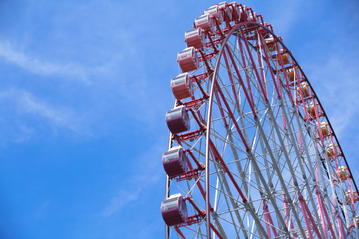 Kasai Rinkai Park
Kasai Rinkai Park Kasai Rinkai Park, Tokyo’s largest park, opened in 1989 on Tokyo Bay, a beautiful area that overlooks the water and the city beyond. Built on reclaimed land, the park was developed with conservation and preservation in mind.The Diamond and Flowers Ferris Wheel is by far the park’
Kasai Rinkai Park
Kasai Rinkai Park Kasai Rinkai Park, Tokyo’s largest park, opened in 1989 on Tokyo Bay, a beautiful area that overlooks the water and the city beyond. Built on reclaimed land, the park was developed with conservation and preservation in mind.The Diamond and Flowers Ferris Wheel is by far the park’
-
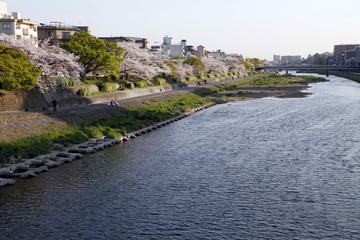 Kamogawa River
Kamogawa River Strolling along the Kamo River (also referred to as Kamogawa River) at night is a quintessential Kyoto experience. The fourth longest river in Kyoto spans from the northeastern most parts of the city southwest to the Katsuragawa River. The most popular section of the river runs thro
Kamogawa River
Kamogawa River Strolling along the Kamo River (also referred to as Kamogawa River) at night is a quintessential Kyoto experience. The fourth longest river in Kyoto spans from the northeastern most parts of the city southwest to the Katsuragawa River. The most popular section of the river runs thro
-
 Kamigamo Shrine
Kamigamo Shrine It’s impossible to miss the larger-than-life red shrine gate at the entrance to Kamigamo, one of Japan’s oldest shrines. Built in the year 678, it pre-dates Kyoto’s reign as capitol of Japan by over a century. Its longevity lends a hand to Kamigamo’s regard as one of the country’s
Kamigamo Shrine
Kamigamo Shrine It’s impossible to miss the larger-than-life red shrine gate at the entrance to Kamigamo, one of Japan’s oldest shrines. Built in the year 678, it pre-dates Kyoto’s reign as capitol of Japan by over a century. Its longevity lends a hand to Kamigamo’s regard as one of the country’s
-
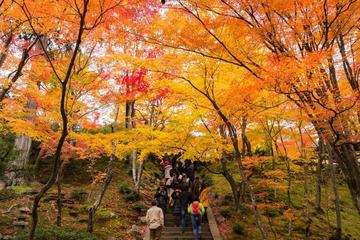 Jojakko-ji Temple
Jojakko-ji Temple Jojakko-ji Temple is not an ordinary temple; it was built on the side of a mountain in the thick of a famous bamboo grove. Finding it feels like an adventure, and climbing to the top feels like a workout. The view of Kyoto from the top of Jojakko-ji Temple rewards the effort migh
Jojakko-ji Temple
Jojakko-ji Temple Jojakko-ji Temple is not an ordinary temple; it was built on the side of a mountain in the thick of a famous bamboo grove. Finding it feels like an adventure, and climbing to the top feels like a workout. The view of Kyoto from the top of Jojakko-ji Temple rewards the effort migh
-
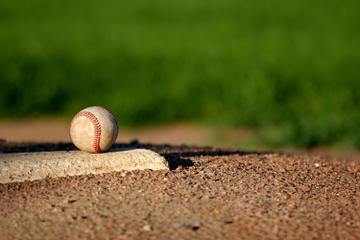 Jingu Baseball Stadium
Jingu Baseball Stadium Its not the biggest or most modern baseball stadium in Tokyo, but Meiji Jingu Stadium in Shinjuku is worth visiting for its unique atmosphere and history. Opened in 1926, its one of the few stadiums still in existence where Babe Ruth played (along with Lou Gehrig on a 1934,
Jingu Baseball Stadium
Jingu Baseball Stadium Its not the biggest or most modern baseball stadium in Tokyo, but Meiji Jingu Stadium in Shinjuku is worth visiting for its unique atmosphere and history. Opened in 1926, its one of the few stadiums still in existence where Babe Ruth played (along with Lou Gehrig on a 1934,
-
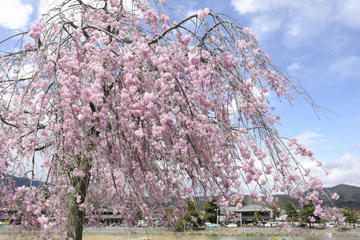 Japan Mint
Japan Mint The Japan Mint Osaka Branch is the headquarters of the Japan Mint, and it’s here that the history of Japanese money-printing, or minting, is told through interactive exhibits, including videos. The brick building resembles one from an American western; the western-style building is one
Japan Mint
Japan Mint The Japan Mint Osaka Branch is the headquarters of the Japan Mint, and it’s here that the history of Japanese money-printing, or minting, is told through interactive exhibits, including videos. The brick building resembles one from an American western; the western-style building is one
-
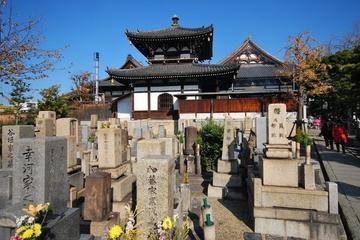 Isshin-ji Temple
Isshin-ji Temple The Buddhist Isshin-ji Temple dates back to 1185, and was said to be founded by Honen, a Pure Land Buddhist (a type of Buddhism based on Mahayana Buddhism).What makes this temple particularly special is its many urns and mausoleums spread across the property which housed the ashes
Isshin-ji Temple
Isshin-ji Temple The Buddhist Isshin-ji Temple dates back to 1185, and was said to be founded by Honen, a Pure Land Buddhist (a type of Buddhism based on Mahayana Buddhism).What makes this temple particularly special is its many urns and mausoleums spread across the property which housed the ashes
-
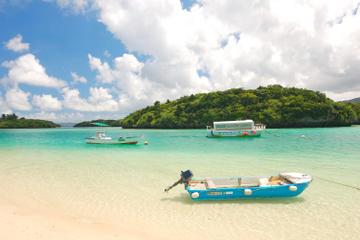 Ishigaki Island
Ishigaki Island Travelers looking to escape the energy and excitement of Okinawa can find a relaxing respite on the shores of Ishigaki Island. Although this popular destination ranks among the Yaeyama Islands’ most populated centers—the silver shores of Ishigaki are a globetrotter’s delight. Visit
Ishigaki Island
Ishigaki Island Travelers looking to escape the energy and excitement of Okinawa can find a relaxing respite on the shores of Ishigaki Island. Although this popular destination ranks among the Yaeyama Islands’ most populated centers—the silver shores of Ishigaki are a globetrotter’s delight. Visit
-
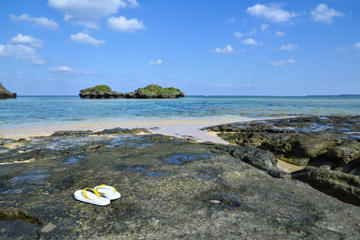 Iriomote Island
Iriomote Island Beautiful Iriomote Island is one of the most remote spots in the Japanese archipelago. Not a lot has changed on the island in recent decades, and 90 percent of it remains blanketed in jungle and mangrove forest, the abode of the rare Iriomote wildcat. While the interior of the isla
Iriomote Island
Iriomote Island Beautiful Iriomote Island is one of the most remote spots in the Japanese archipelago. Not a lot has changed on the island in recent decades, and 90 percent of it remains blanketed in jungle and mangrove forest, the abode of the rare Iriomote wildcat. While the interior of the isla
-
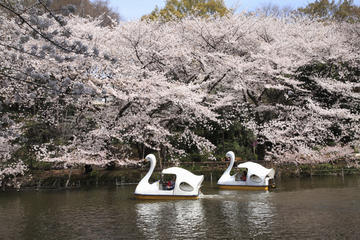 Inokashira Park
Inokashira Park Located in the Kichijoji neighborhood of Tokho, Inokashira Park (more specifically the pond found within) was the first water source for Edo (now Tokyo) until a new water supply system was completed in 1898. The public park was established in 1917 and today is one of the city’s mos
Inokashira Park
Inokashira Park Located in the Kichijoji neighborhood of Tokho, Inokashira Park (more specifically the pond found within) was the first water source for Edo (now Tokyo) until a new water supply system was completed in 1898. The public park was established in 1917 and today is one of the city’s mos
Total
1725 -travel
FirstPage PreviousPage NextPage LastPage CurrentPage:
5/87 20-travel/Page GoTo Page:
 Maruyama Park
Maruyama Park Set at the base of Maruyama Mountain in the western suburbs of Sapporo, Maruyama Park comprises 15 acres (6 hectares) of virgin and secondary forest filled with oak, magnolia, maple and Japanese katsura trees. Some 1,700 Hokkaido wild cherry trees also grow within the park, making it
Maruyama Park
Maruyama Park Set at the base of Maruyama Mountain in the western suburbs of Sapporo, Maruyama Park comprises 15 acres (6 hectares) of virgin and secondary forest filled with oak, magnolia, maple and Japanese katsura trees. Some 1,700 Hokkaido wild cherry trees also grow within the park, making it
 Lazona Kawasaki Plaza
Lazona Kawasaki Plaza Nicknamed “the land of anything you could want,” Lazona Kawasaki Plaza is one of the biggest shopping centers in Kanto, with some 300 retailers under one roof. Popular international brands like Gap, Zara, Tommy Hilfiger and UNIQLO are intermixed with Japanese brands.Shoppers
Lazona Kawasaki Plaza
Lazona Kawasaki Plaza Nicknamed “the land of anything you could want,” Lazona Kawasaki Plaza is one of the biggest shopping centers in Kanto, with some 300 retailers under one roof. Popular international brands like Gap, Zara, Tommy Hilfiger and UNIQLO are intermixed with Japanese brands.Shoppers
 Kuromon Ichiba Market
Kuromon Ichiba Market Nicknamed “Osaka’s kitchen,” the Kuromon Ichiba Market caters to the city’s chefs. Every day, cooks from well-known -- and hole-in-the-wall -- restaurants scurry through the 600 meter-long market’s 170 food stalls purchasing fresh fruits, vegetables, fish, eggs, herbs, and mo
Kuromon Ichiba Market
Kuromon Ichiba Market Nicknamed “Osaka’s kitchen,” the Kuromon Ichiba Market caters to the city’s chefs. Every day, cooks from well-known -- and hole-in-the-wall -- restaurants scurry through the 600 meter-long market’s 170 food stalls purchasing fresh fruits, vegetables, fish, eggs, herbs, and mo
 Kumano Kodo
Kumano Kodo The ancient pilgrimage to the Three Grand Shrines of Kumano spans as far back as 1,000 years ago and still continues today. The pilgrimage routes that crisscross Kii, Japan’s largest peninsula have become known as the Kumano Kodo. Pilgrims and tourists, alike, take on the route to reac
Kumano Kodo
Kumano Kodo The ancient pilgrimage to the Three Grand Shrines of Kumano spans as far back as 1,000 years ago and still continues today. The pilgrimage routes that crisscross Kii, Japan’s largest peninsula have become known as the Kumano Kodo. Pilgrims and tourists, alike, take on the route to reac
 Kondoi Beach
Kondoi Beach Stationed on the west coast of Taketomi Island, Kondoi Beach offers travelers unlimited access to vast turquoise waters and perfect white sandy shores. Kondoi is home to some of the best snorkeling in the area, too—but visitors say it all comes at a price. Travelers looking to unwind
Kondoi Beach
Kondoi Beach Stationed on the west coast of Taketomi Island, Kondoi Beach offers travelers unlimited access to vast turquoise waters and perfect white sandy shores. Kondoi is home to some of the best snorkeling in the area, too—but visitors say it all comes at a price. Travelers looking to unwind
 Kohama Island
Kohama Island Rolling hills and uninterrupted views set the island of Kohama apart from others in the Yaeyama archipelago. Travelers can wander grassy passes and shaded trails to two of the island’s most popular lookouts—Chura san’s Point and Ufudake. Locals say Chura san offers some of the best v
Kohama Island
Kohama Island Rolling hills and uninterrupted views set the island of Kohama apart from others in the Yaeyama archipelago. Travelers can wander grassy passes and shaded trails to two of the island’s most popular lookouts—Chura san’s Point and Ufudake. Locals say Chura san offers some of the best v
 Kiyotaki River
Kiyotaki River The crystal-clear waters of the Kiyotaki River make its banks one of the most scenic walking trails in the Kyoto area. Alighting from the bus at the Takao stop that heads west out of Kyoto and then on to Ninnaji Temple, it’s just a short walk down to the banks of the Kiyotaki River.
Kiyotaki River
Kiyotaki River The crystal-clear waters of the Kiyotaki River make its banks one of the most scenic walking trails in the Kyoto area. Alighting from the bus at the Takao stop that heads west out of Kyoto and then on to Ninnaji Temple, it’s just a short walk down to the banks of the Kiyotaki River.
 Kitanomaru Park
Kitanomaru Park Located just north of the Imperial Palace grounds in Tokyo, Kitanomaru Park was once the site of the northernmost section of Edo Castle, where members of the Tokugawa clan lived. In 1969 in celebration of Emperor Showa’s 60th birthday, the area was opened to the public as a woodlan
Kitanomaru Park
Kitanomaru Park Located just north of the Imperial Palace grounds in Tokyo, Kitanomaru Park was once the site of the northernmost section of Edo Castle, where members of the Tokugawa clan lived. In 1969 in celebration of Emperor Showa’s 60th birthday, the area was opened to the public as a woodlan
 Kennin-Ji Temple
Kennin-Ji Temple The oldest and one of the most important Zen temples in Kyoto, Kennin-Ji was founded in the year 1202 by a monk. Situated near the famous Geisha district of Gion, Kennin-ji attracts Buddhist monks on pilgrimage, as well as religious locals and tourists, and curious explorers.
Kennin-Ji Temple
Kennin-Ji Temple The oldest and one of the most important Zen temples in Kyoto, Kennin-Ji was founded in the year 1202 by a monk. Situated near the famous Geisha district of Gion, Kennin-ji attracts Buddhist monks on pilgrimage, as well as religious locals and tourists, and curious explorers.
 Katsura Imperial Villa
Katsura Imperial Villa One of Japans most important large-scale cultural treasures, Katsura Imperial Villa preserves traditional Edo period architecture and garden design. Tatami, or rice straw mats, line the interior floors, and screen walls separate the ancient drawing room from tea houses. A ci
Katsura Imperial Villa
Katsura Imperial Villa One of Japans most important large-scale cultural treasures, Katsura Imperial Villa preserves traditional Edo period architecture and garden design. Tatami, or rice straw mats, line the interior floors, and screen walls separate the ancient drawing room from tea houses. A ci
 Kasai Rinkai Park
Kasai Rinkai Park Kasai Rinkai Park, Tokyo’s largest park, opened in 1989 on Tokyo Bay, a beautiful area that overlooks the water and the city beyond. Built on reclaimed land, the park was developed with conservation and preservation in mind.The Diamond and Flowers Ferris Wheel is by far the park’
Kasai Rinkai Park
Kasai Rinkai Park Kasai Rinkai Park, Tokyo’s largest park, opened in 1989 on Tokyo Bay, a beautiful area that overlooks the water and the city beyond. Built on reclaimed land, the park was developed with conservation and preservation in mind.The Diamond and Flowers Ferris Wheel is by far the park’
 Kamogawa River
Kamogawa River Strolling along the Kamo River (also referred to as Kamogawa River) at night is a quintessential Kyoto experience. The fourth longest river in Kyoto spans from the northeastern most parts of the city southwest to the Katsuragawa River. The most popular section of the river runs thro
Kamogawa River
Kamogawa River Strolling along the Kamo River (also referred to as Kamogawa River) at night is a quintessential Kyoto experience. The fourth longest river in Kyoto spans from the northeastern most parts of the city southwest to the Katsuragawa River. The most popular section of the river runs thro
 Kamigamo Shrine
Kamigamo Shrine It’s impossible to miss the larger-than-life red shrine gate at the entrance to Kamigamo, one of Japan’s oldest shrines. Built in the year 678, it pre-dates Kyoto’s reign as capitol of Japan by over a century. Its longevity lends a hand to Kamigamo’s regard as one of the country’s
Kamigamo Shrine
Kamigamo Shrine It’s impossible to miss the larger-than-life red shrine gate at the entrance to Kamigamo, one of Japan’s oldest shrines. Built in the year 678, it pre-dates Kyoto’s reign as capitol of Japan by over a century. Its longevity lends a hand to Kamigamo’s regard as one of the country’s
 Jojakko-ji Temple
Jojakko-ji Temple Jojakko-ji Temple is not an ordinary temple; it was built on the side of a mountain in the thick of a famous bamboo grove. Finding it feels like an adventure, and climbing to the top feels like a workout. The view of Kyoto from the top of Jojakko-ji Temple rewards the effort migh
Jojakko-ji Temple
Jojakko-ji Temple Jojakko-ji Temple is not an ordinary temple; it was built on the side of a mountain in the thick of a famous bamboo grove. Finding it feels like an adventure, and climbing to the top feels like a workout. The view of Kyoto from the top of Jojakko-ji Temple rewards the effort migh
 Jingu Baseball Stadium
Jingu Baseball Stadium Its not the biggest or most modern baseball stadium in Tokyo, but Meiji Jingu Stadium in Shinjuku is worth visiting for its unique atmosphere and history. Opened in 1926, its one of the few stadiums still in existence where Babe Ruth played (along with Lou Gehrig on a 1934,
Jingu Baseball Stadium
Jingu Baseball Stadium Its not the biggest or most modern baseball stadium in Tokyo, but Meiji Jingu Stadium in Shinjuku is worth visiting for its unique atmosphere and history. Opened in 1926, its one of the few stadiums still in existence where Babe Ruth played (along with Lou Gehrig on a 1934,
 Japan Mint
Japan Mint The Japan Mint Osaka Branch is the headquarters of the Japan Mint, and it’s here that the history of Japanese money-printing, or minting, is told through interactive exhibits, including videos. The brick building resembles one from an American western; the western-style building is one
Japan Mint
Japan Mint The Japan Mint Osaka Branch is the headquarters of the Japan Mint, and it’s here that the history of Japanese money-printing, or minting, is told through interactive exhibits, including videos. The brick building resembles one from an American western; the western-style building is one
 Isshin-ji Temple
Isshin-ji Temple The Buddhist Isshin-ji Temple dates back to 1185, and was said to be founded by Honen, a Pure Land Buddhist (a type of Buddhism based on Mahayana Buddhism).What makes this temple particularly special is its many urns and mausoleums spread across the property which housed the ashes
Isshin-ji Temple
Isshin-ji Temple The Buddhist Isshin-ji Temple dates back to 1185, and was said to be founded by Honen, a Pure Land Buddhist (a type of Buddhism based on Mahayana Buddhism).What makes this temple particularly special is its many urns and mausoleums spread across the property which housed the ashes
 Ishigaki Island
Ishigaki Island Travelers looking to escape the energy and excitement of Okinawa can find a relaxing respite on the shores of Ishigaki Island. Although this popular destination ranks among the Yaeyama Islands’ most populated centers—the silver shores of Ishigaki are a globetrotter’s delight. Visit
Ishigaki Island
Ishigaki Island Travelers looking to escape the energy and excitement of Okinawa can find a relaxing respite on the shores of Ishigaki Island. Although this popular destination ranks among the Yaeyama Islands’ most populated centers—the silver shores of Ishigaki are a globetrotter’s delight. Visit
 Iriomote Island
Iriomote Island Beautiful Iriomote Island is one of the most remote spots in the Japanese archipelago. Not a lot has changed on the island in recent decades, and 90 percent of it remains blanketed in jungle and mangrove forest, the abode of the rare Iriomote wildcat. While the interior of the isla
Iriomote Island
Iriomote Island Beautiful Iriomote Island is one of the most remote spots in the Japanese archipelago. Not a lot has changed on the island in recent decades, and 90 percent of it remains blanketed in jungle and mangrove forest, the abode of the rare Iriomote wildcat. While the interior of the isla
 Inokashira Park
Inokashira Park Located in the Kichijoji neighborhood of Tokho, Inokashira Park (more specifically the pond found within) was the first water source for Edo (now Tokyo) until a new water supply system was completed in 1898. The public park was established in 1917 and today is one of the city’s mos
Inokashira Park
Inokashira Park Located in the Kichijoji neighborhood of Tokho, Inokashira Park (more specifically the pond found within) was the first water source for Edo (now Tokyo) until a new water supply system was completed in 1898. The public park was established in 1917 and today is one of the city’s mos